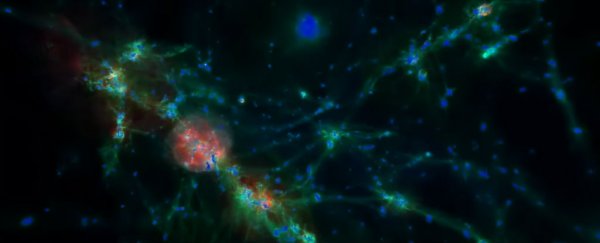It sounds like something ripped straight from the pages of sci-fi novel, but researchers have created an accurate simulation of our Universe inside a massive supercomputer, giving astronomers the unique ability to watch it evolve in front of their eyes.
To make this simulation a reality, a team from the Harvard-Smithsonian Centre for Astrophysics connected 8,000 CPUs in 2014, and created a model that encompasses many equations from the last few centuries of astronomical observations that have been allowed to evolve over several decades. After three months of constant crunching, the team managed to recreate a 350 million light-year wide cube of Universe that has virtually evolved over 13 billion years.
According to Ian O'Neil at Discovery, the model - named Illustris - has a resolution of 12 billion pixels, which would take the average home computer 2,000 years to simulate.
So what are researchers hoping to learn? Well, though it's just plain cool that we can simulate an entire Universe inside a machine, the simulation offers researchers a virtual testing ground to run their hypotheses through. Basically, since there are so many equations and formulas that we think govern our Universe, the simulation allows research to test these hypotheses in a whole new way.
The idea here is that if the hypotheses and equations at work inside the simulation create the same things astronomers see in space, they'll know they are on the right track, mathematically speaking. The simulation closely resembles reality with only a few anomalies that the team can now focus in on and reassess.
The simulation also lets researchers pause, zoom, and study different parts of the Universe. This means that they can basically review how stars, galaxies, and planets form over and over again - something that is completely impossible in real life.
"Illustris is like a time machine. We can go forward and backward in time. We can pause the simulation and zoom into a single galaxy or galaxy cluster to see what's really going on," study co-author Shy Genel told Discovery.
As our computing power increases, we will hopefully have more of these simulations in the future. Until then, you can read about the team's full report in Nature, and watch part of the simulation below:
